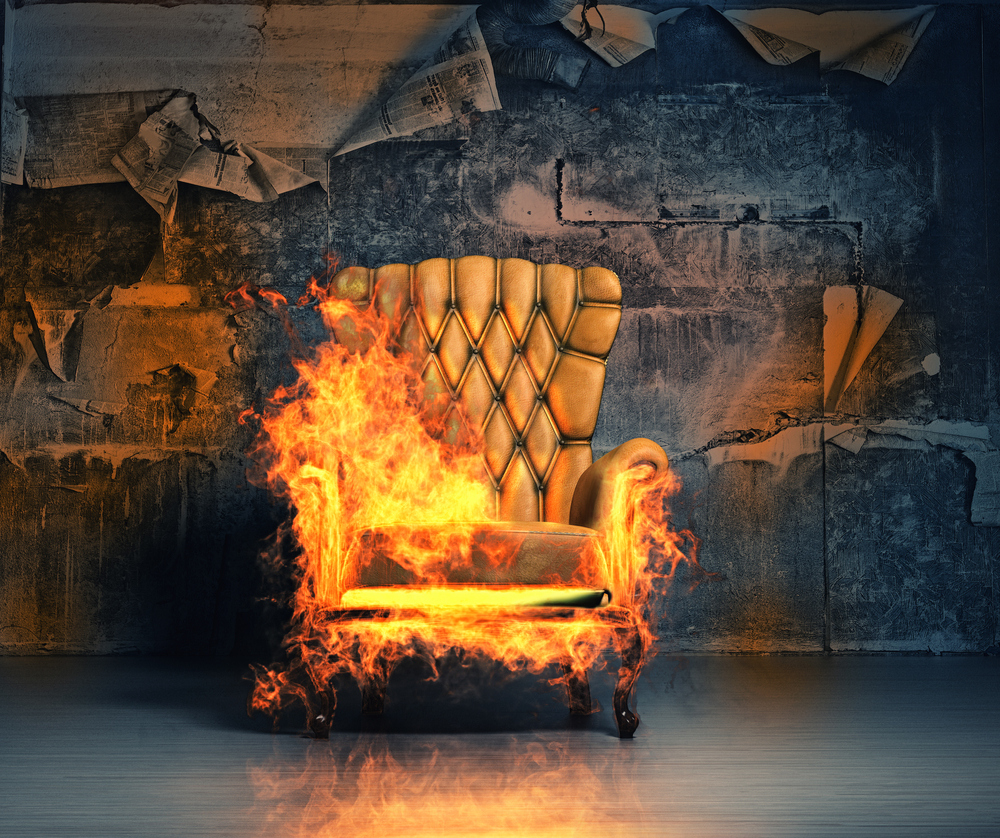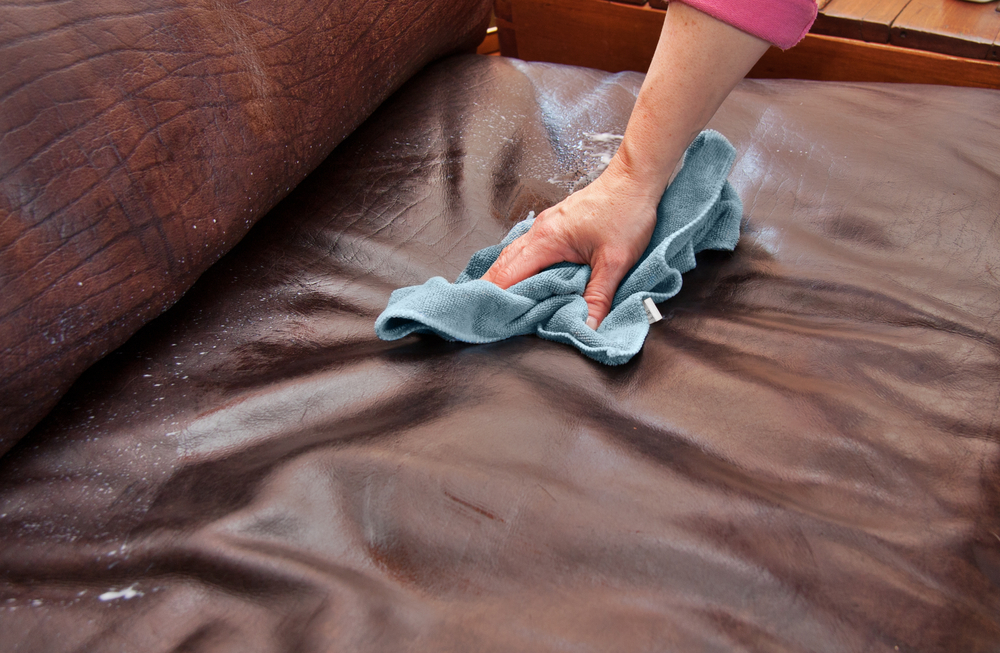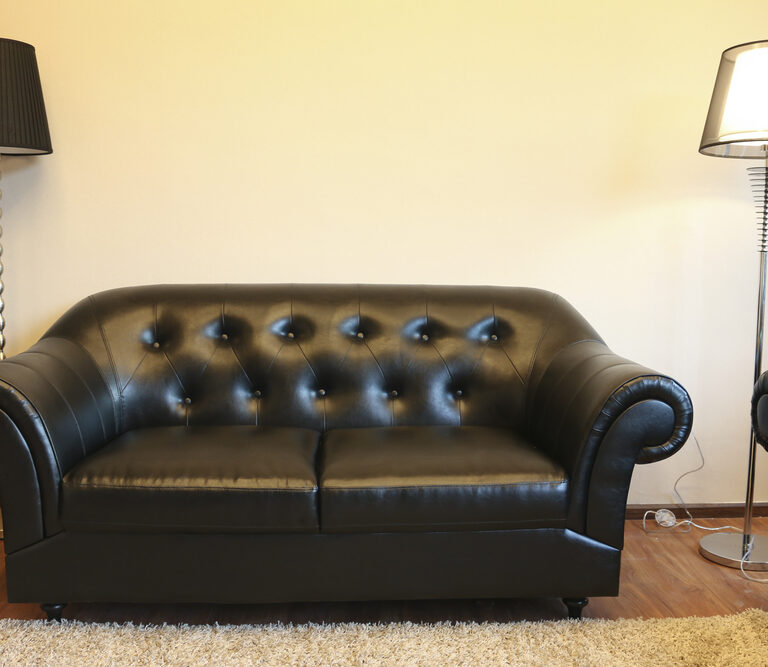Leather is a fantastic material for products ranging from sofas to handbags and loveseats to work boots. Good quality leather furniture can last for as long as three times longer than most other fabrics you’ll find on the market. A premium leather sofa that’s well-maintained should last for upwards of 30 years without requiring much if any professional work.
This is all to say that leather furniture isn’t cheap. It’s one of the centerpieces of a home. For most people, buying a leather sofa or recliner is a big purchase on which they spend a ton of time and energy researching and comparing before they finally find that perfect item that seems like it was made specifically for them. And once you finally get that beautiful leather monstrosity shoved, nudged, and scooted into the perfect location, you just want to enjoy its luxurious comfort.
But then the unthinkable happens: a spill, a stain. And the world lurches to a stop as you watch your beautiful shrine of relaxation erupt in figurative Hellfire before your very eyes. Everything is ruined. Your life no longer has purpose. Food has lost its taste. You might as well drop your couch off at the city dump.

Or you could just clean it.
How to Clean Leather Furniture
The methods, products, and chemicals you use for cleaning leather primarily depend on the type of stain or mess you have on your hands.
First, Get the Mess Off
Regardless of what has caused the mess though, the first step is always going to be getting the bulk of the mess off the leather and then vacuuming up all the dust and crumbs that have likely accumulated in the cracks and seams of your furniture. You want to make sure that you clean up any sand and particulates. But be gentle and avoid scuffing or scratching your leather while cleaning it.
Your next steps will depend on what kind of mess is left after you get all the major debris off the leather. Let’s go through them all.
Maintenance Cleaning
Leather does a pretty good job of taking care of itself when it is kept in climate-controlled places like air-conditioned homes. But some general cleaning like this is perfect for keeping things neat and tidy without damaging your leather furniture.
Required Materials:
- 2x Soft rag or microfiber towel
- Bucket of hot water
- That’s it!
Process:
You want two rags because you’ll want to keep one of them dry for wiping down and quickly drying off the leather.
Make sure you wring out your damp cloth and then just gently wipe down the entire surface with the cloth. Use your bucket for rinsing out the cloth regularly, always making sure to wring out the cloth so that it’s damp and not soaked when you go back to wiping up the leather.
This will pick up dust and small pieces of debris while removing sticky stains and other liquids. Wiping everything down evenly will help keep your leather a more even coloration than only doing spot treating. After you’re satisfied that you’ve picked up everything you can, gently wipe the leather down with your dry cloth to soak up any excess moisture.
Let the leather dry naturally at room temperature before deciding whether you need to up the ante with chemicals. Leather sofas don’t always dry evenly and discoloration may be noticed as it’s drying. This process is as simple as it gets, but is quite effective for cleaning moderately soiled leather chairs.
Stubborn Problem Spots
After you’ve done some general cleaning using the above hot water method and allowed your sofa to dry, you may notice some stubborn stains that didn’t come out. Here’s what you’ll need for more difficult to clean patches on your leather furniture.
Required Materials:
- 2x Soft rag or microfiber towel
- White distilled vinegar or
- Stuff like this Chemical Guys Leather Cleaner
Process:
If you went with a store-bought leather cleaner, then simply follow the directions provided on the bottle. If you’re going the home remedy route and using vinegar, mix equal parts vinegar and warm water in a bucket. You’re going to use the same method as with the hot water method and just dampen your cloth with the vinegar solution before wiping and gently buffing the leather.
Rinse your cloth in your bucket of cleaning solution regularly, always wringing out the cloth before going back to wiping and gently buffing the leather. Once you’ve done all you can, take your spare dry cloth and wipe up any excess moisture. Job done.
Grease Stained Leather Furniture
Dried grease stains can be stubborn, but with some patience, it’s easy to bring the life back to your leather furniture.
Required Materials:
- Soft rag or microfiber towel<
- Baking soda
Process:
Sprinkle the grease stain with an even dusting of baking soda. Cover the affected area and let the baking soda pull the grease out of the leather for a few hours—let’s say four just for people who like specifics. After the time is up, brush off the baking soda with a dry microfiber cloth. Using dry cleaning methods like this will help prevent the grease from soaking deeper into the leather.
Ink Stained Leather Furniture
Pen marks and ink spills require special attention but will often come right up without too much trouble.
Required Materials:
- Cotton balls or swabs
- Rubbing alcohol
Process:
Always start off lightly with just a small dab of alcohol on a cotton swab or ball. Gently wipe the ink with your alcohol swab until the ink stain comes off. Rubbing alcohol used like this is great for mildew and mold patches that might form on leather left in unideal conditions as well.
Light or White Colored Leather Furniture
Light-colored leather can show marks and stains that darker colored leather wouldn’t. This makes keeping white or beige leather furniture clean a bit tougher.
Required Materials:
- 2x Soft rag or microfiber towel
- Lemon juice
- Cream of tartar
Process:
For this tried and true home remedy method, combine lemon juice with cream of tartar and apply the paste to affected areas. Let it sit for 10 minutes before wiping everything away with a cloth dampened with warm water. Finish off the project by wiping down everything with a dry rag so it dries evenly.

Things to Know When Cleaning Leather Furniture
Don’t Get the Leather Too Wet
Don’t panic if your leather does get wet as you aren’t likely to cause any lasting damage. Just wipe away drips and moisture as you go. Always use a damp cloth that has been wrung out, and have a dry cloth on hand for wiping away excess moisture after you’ve finished cleaning up for that final touch of care.
Your Leather Will Darken When You Clean It
Real leather is made from animal hide which naturally absorbs water and oils. This means that your leather sofa is going to soak up moisture that it comes in contact with from spills, your skin, and whatever you use to clean it. It will dry out and lighten up some, but expect your leather furniture to darken naturally over time.
Don’t Use a Blow Dryer or Any Rapid Drying Processes
If your leather furniture somehow gets soaked, mop up excess moisture immediately but allow the leather to dry naturally otherwise. Artificial drying can damage the leather’s chemical structure and result in shrinkage, hardening, and cracking of the material. Your leather lightening, hardening, or cracking is a sign that it may be drying out and could use some moisturizer.
Don’t Use Stain Removing Products
This isn’t a hard and fast rule, but generally you should only use basic chemicals and products like the ones we mentioned or ones designed specifically for leather. If you do want to try out a cleaning product that you’re unsure of, apply a small amount and follow the directions on a test area of the furniture, ideally somewhere where a discoloration wouldn’t be noticeable like the back of a couch that is against a wall or the underside of the arm.
Always Be Gentle With Your Cleaning
Leather doesn’t react well to too much heat or friction. Scrubbing vigorously at a stubborn spot is likely to do more harm than good. So go easy on your leather and use soft cloths that don’t produce a lot of friction like these microfiber towels.
Leather Changes Over Time
Leather is a fantastically durable material that often gets more beautiful and comfortable over time when properly cared for. However, this also means that your pristine looking leather recliner is unlikely to remain immaculate. Leather is a material that reacts to how it’s used which is what gives old leather goods that wonderful lived-in feeling and classical charm.
Conditioning and Dying
As we’ve mentioned, leather changes and breaks in over time. It will soak up the natural oils that our bodies produce and, when kept in proper conditions, should generally maintain itself over time. Many people learn to love the charming appearance of a broken in leather sofa, but others prefer keeping things looking immaculate.
Either way, some occasional treatments with a leather conditioner product like this Leather Honey conditioner every 6-12 months will help your couch keep its rich color and soft texture. And, if the color has already faded noticeably, you can also try treating your furniture with some leather dye like Fiebing’s Leather Dye which comes in a wide variety of color options to match with your leather.
The Test of Time
While keeping your leather furniture in perfect condition is ideal, don’t fret too much if you make a mess or your sofa starts to show its age. Part of what gives leather its appeal is the way it develops over the years. Let it grow old gracefully by taking good care of your furniture with these simple yet effective leather cleaning methods and your favorite comfy spot will last for many years to come.
